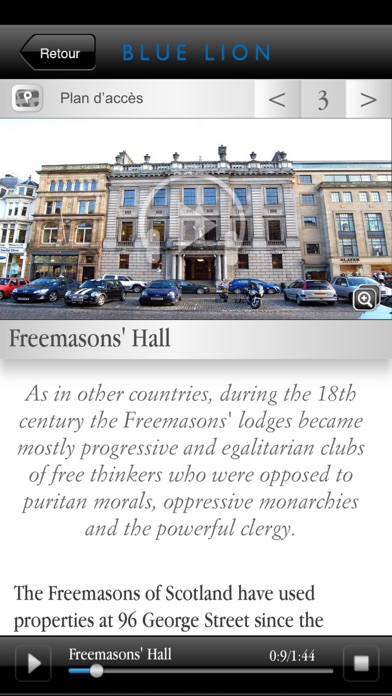
Edinburgh - Enlightenment
The Edinburgh Enlightenment
The two walks described in this guide are designed to introduce the user to the Edinburgh Enlightenment of the 18th. century. The first walk concentrates on the Old Town of Edinburgh, while the second walk takes place in the New Town, construction of which began in the middle of the 18th. century at the height of the Enlightenment. The two walks are delineated by the topography of the city, which creates an atmosphere of unique and almost unreal theatricality, as though the inhabitants had conspired to build a stage set, just to impress their visitors. It would be more correct to say, however, that the natural topography has, over the centuries, dictated the development of the city, defined its history and even influenced its culture.
Defining the start date of major intellectual movements throughout history is difficult, prone to individual bias and eventually somewhat arbitrary. Such is the case with the Edinburgh Enlightenment, which is often said to have flourished for a century beginning around 1740. But this obscures the fact that it did so on a foundation of decades of education and enterprise, as well as, ironically, historical deprivation, poverty and adversity. Throughout the two walks, first in the Old Town and then the New Town, you will see evidence both of this earlier deprivation and the subsequent intellectual and cultural explosion. There is no doubt that the Scottish Enlightenment was cradled, nurtured and reached its zenith in Edinburgh, where a veritable storm of intellectual fervour accompanied the extension of the squalid, overcrowded and almost medieval Old Town into the elegant Georgian marvel of urban planning, which constitutes the New Town.
Short biography of Richard Sebastian Wanless
The background to why I created this guide to the Edinburgh Enlightenment is that I was born in the 1950’s in Edinburgh, Scotland, where I was a youthful witness to the efforts of a population determined to mitigate the austerity of war and rediscover the city’s cultural vibrancy, enshrined in its heritage as the cradle of the Scottish Enlightenment. Enrolled at the Royal High School, I was constantly reminded of the institution’s ancient and illustrious history, having been founded in 1128 and having provided a classical education to the majority of the impresarios of the Edinburgh Enlightenment. In 1973 I was matriculated at Edinburgh Medical School, another bastion of enlightened thinking since the 18th. century. Soon after I met the love of my life, Tamara, whom I married in Moscow in 1978.
By the age of twenty-four, I began work as a doctor, but having already tasted the thrill of research, I embarked on a doctorate at London University and in 1984 received my PhD with a thesis in cardiac physiology. In 1987 I accepted a position in clinical research with the pharmaceutical company, Bristol-Myers Squibb in Brussels, Belgium. The company offered a continuous flow of opportunities, taking me to Japan, then back to Western Europe and then, partly on account of my knowledge of Russian to Eastern Europe. In 1998 I was appointed VP of Intercontinental R&D in the US. In 2002 I saw an opportunity to bring my varied past experiences to bear on the HIV epidemic in Africa and I convinced the company to transfer me to the Bristol-Myers-Squibb Foundation as medical director of the charity’s $100 million “Secure the Future” program for HIV in southern Africa. In 2007 I retired from BMS and began work with Baylor College of Medicine’s Paediatric AIDS Initiative, which has pioneered care and treatment for children infected and affected by HIV in Africa and Romania. In 2012, Tamara and I decided to return to Scotland after 31 years abroad and we settled in the country’s largest city, Glasgow. We celebrated our 40th anniversary in 2018, along with our sons wedding.



